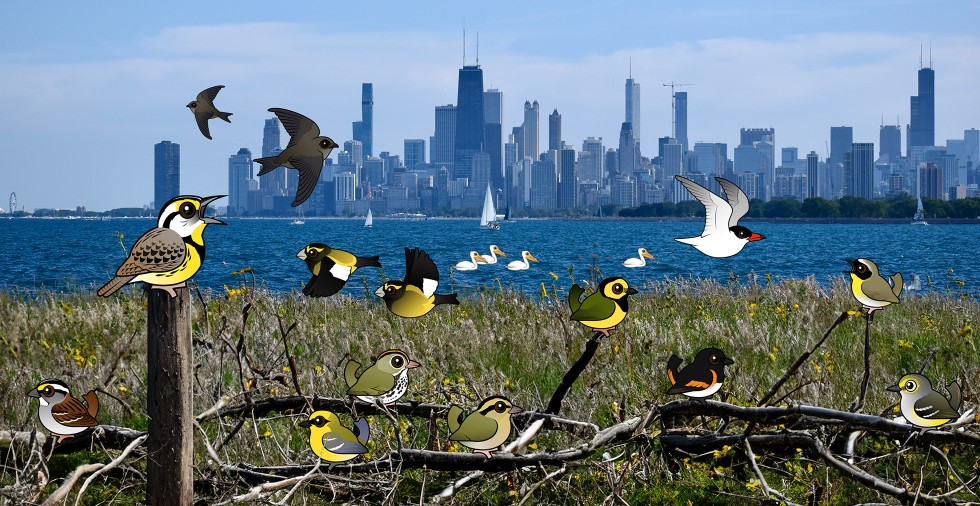Chicago Area Birders: Take Action for Birds

The "Magic Hedge" at Montrose Point Bird Sanctuary in Chicago by Raed Mansour (CC BY 2.0 DEED) with Birdorable birds
Chicago's skyline, while iconic, poses a significant threat to tens of thousands of migrating birds each year. Birds, unable to recognize clear or reflective glass as an obstacle, suffer fatal collisions with buildings. Since 2016, Bird Friendly Chicago (BFC) has been at the forefront of addressing this pressing issue, culminating in a 2020 directive from Chicago’s city council to the Department of Planning and Development (DPD) to prioritize bird-friendly building design.
Despite these efforts, as we approach spring 2024, the DPD hesitates to make bird safety measures mandatory, choosing instead to list them as optional. This decision could perpetuate the cycle of avian fatalities, undermining years of advocacy and research aimed at protecting Chicago's feathered visitors.
The time to act is now. The DPD's upcoming Sustainable Development Policy must include mandatory bird-friendly building standards with their policy release scheduled for April 15th -- there is not time to wait.
BFC has outlined two immediate actions for the public:
- Participate in the DPD survey, emphasizing the importance of Bird Protection. Learn more on the Chicago Ornithological Society website here.
- Send a personalized email to Mayor Brandon Johnson and key city officials, advocating for mandatory bird-friendly provisions. A sample letter is provided at the COS site linked above.
By engaging in these actions, and spreading the word through social media, Chicago area birders can amplify a collective voice for conservation.
COS has identified April 4th as a Day of Action, where many voices can join together to make a big impact.
This issue transcends environmental considerations; it's about shaping a city that coexists harmoniously with nature. Let's ensure Chicago leads by example, safeguarding the lives of migrating birds for generations to come.





Comments
Leave a comment
Thank you!